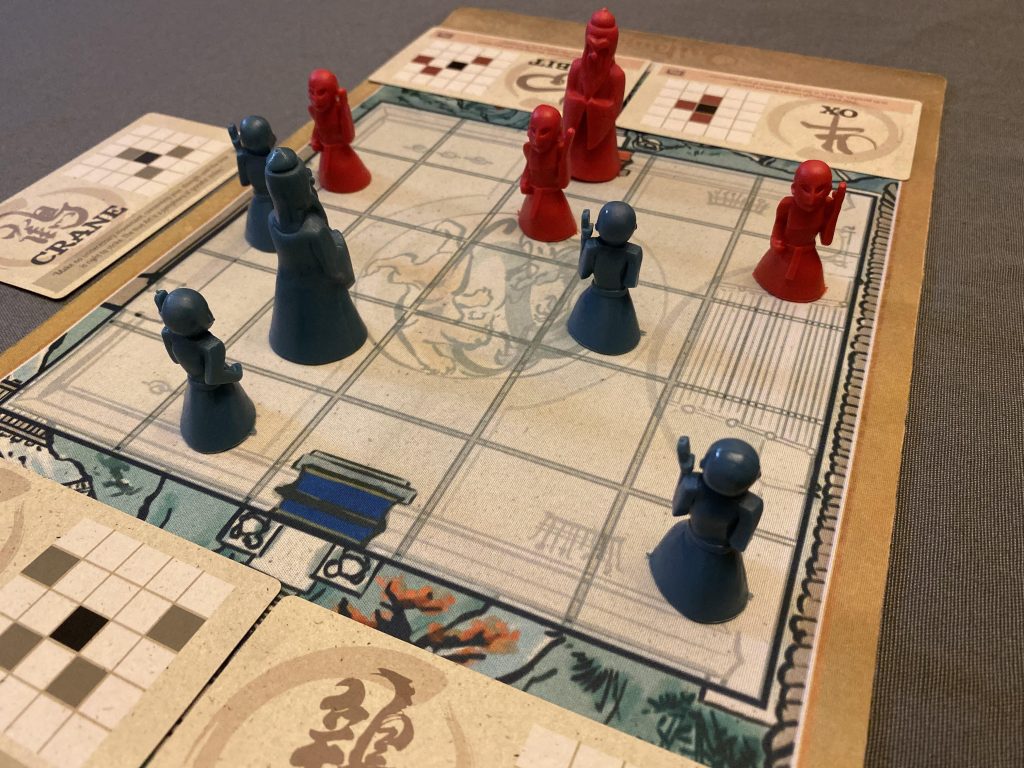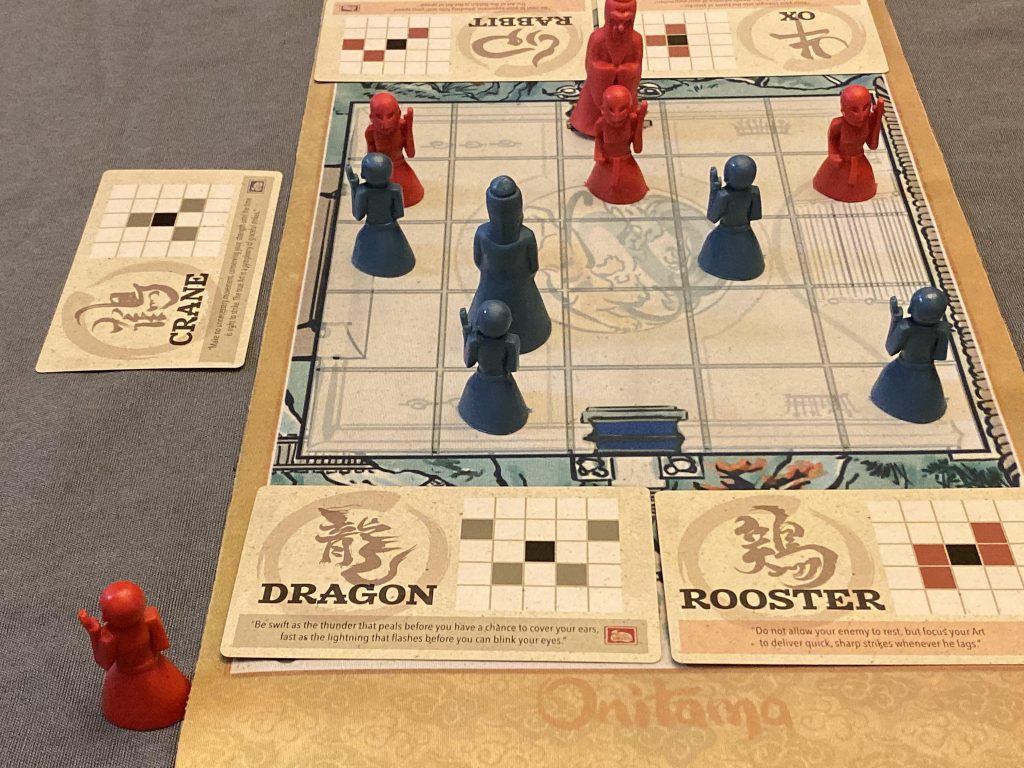Sometimes when I sit down to the gaming table I want something that can simultaneously grant me some serenity and offer me a rewarding challenge. After a long day of tedium and circuitous one-upmanship, it’s nice to find myself at a table with a simple, but deep, game and find my zen. Even though it is a competitive game, Onitama by Arcane Wonders is one such game. The rules couldn’t be simpler and the components couldn’t be much more elegant. It is a game of transparency, restraint, and unpredictable outcomes.

Onitama by Arcane Wonders
Designer: Shimpei Sato
Artist(s): Jun Kondo, Mariusz Szmerdt
Publisher: Arcane Wonders
Players: 2
Prominent Mechanic(s): Grid Movement
Published: 2014
This game is one of our seven staples you should consider for new gamers but it deserves a moment in the spotlight on its own. It’s an abstract strategy, like Hive and Azul, which means that the theme shouldn’t matter. I say “shouldn’t” because sometimes theme does matter in an abstract. Onitama could easily have had a sci-fi theme or even steampunk. Instead, it has a wonderful Japanese martial arts theme which reminds us that even martial combat can be graceful. Even if that combat is simulated. Perhaps particularly so.
So what makes Onitama so elegant and graceful? What is this transparency and restraint? It’s simple. Both the answer and the game. Each player gets five pawns and two move cards (the restraint). There is also one extra card that rotates into play as the most recently played card rotates out. The transparency? Each player sees the other’s cards. You know as much about previous moves, available moves, and potential future moves as the other player does. There is no hidden information in Onitama so while it may be a game of cunning, there is no scheming. What better way to represent honor and integrity?
Exclusive of the expansions, Onitama comes with just 10 pawns, a neoprene playmat, and 16 move cards. 5 of the cards are introduced into play and the rest are ignored. Each card shows a particular move a player can make (where any pawn can land based on its current position). The object is to either capture your opponent’s master pawn (the Way of the Stone) or to gain control of his temple arch square with your own master pawn (the Way of the Stream). You can win both ways, but it’s unlikely.
In any event, the game plays a lot like chess but with less complexity since every piece moves based on what move card you’re playing. What makes it interesting is you know exactly where your pawns will be after you’ve played a move and you know exactly where your opponent could then move. However, unlike chess, it is partly within your control where your opponent moves since you know that the card you play will soon be available to your opponent. You could, for example, refuse to play a card if you know it’s preventing your opponent from gaining access to a given square on the board.
Unpredictability in a game of perfect information?
I also mentioned unpredictable outcomes. You may think this is unlikely given there are only 5 cards in a game and those cards place so much restraint on the pawns. But consider that there are only two ways to win: capture your opponent’s master pawn, or control the opponent’s temple arch square with your master pawn. You will find that who is controlling the board ebbs and flows a lot. You may be pressing the attack when suddenly your opponent has captured one or two of your pawns and now your master pawn is exposed. Or, depending on what cards you currently have, you may have no move you can make except retreat. Or a neutral move that nonetheless removes your advantage.

You will need to apply strategy throughout the game and anticipate your opponent’s moves. But you may still be upset in the end. As with any fight, it’s not over ’til it’s over.
If you like two-player abstract games to cap off an otherwise chaotic day, be sure you consider Onitama by Arcane Wonders (available on Amazon or your local game shop).
Pros/Cons
Pros
- fast-paced and elegant
- a brain-burner without anxiety-inducing competition
- wonderful theme that surprisingly sets the tone for an abstract game
Cons
- the box is awkward to store with your other games and leaves little room for storing expansion cards
- the neoprene mat has to be rolled pretty tightly to fit into the box which can make laying it flat a bit annoying
- my red master pawn doesn’t have a flat base and wobbles a bit like a weeble (this is a manufacturing flaw, not a design flaw)










